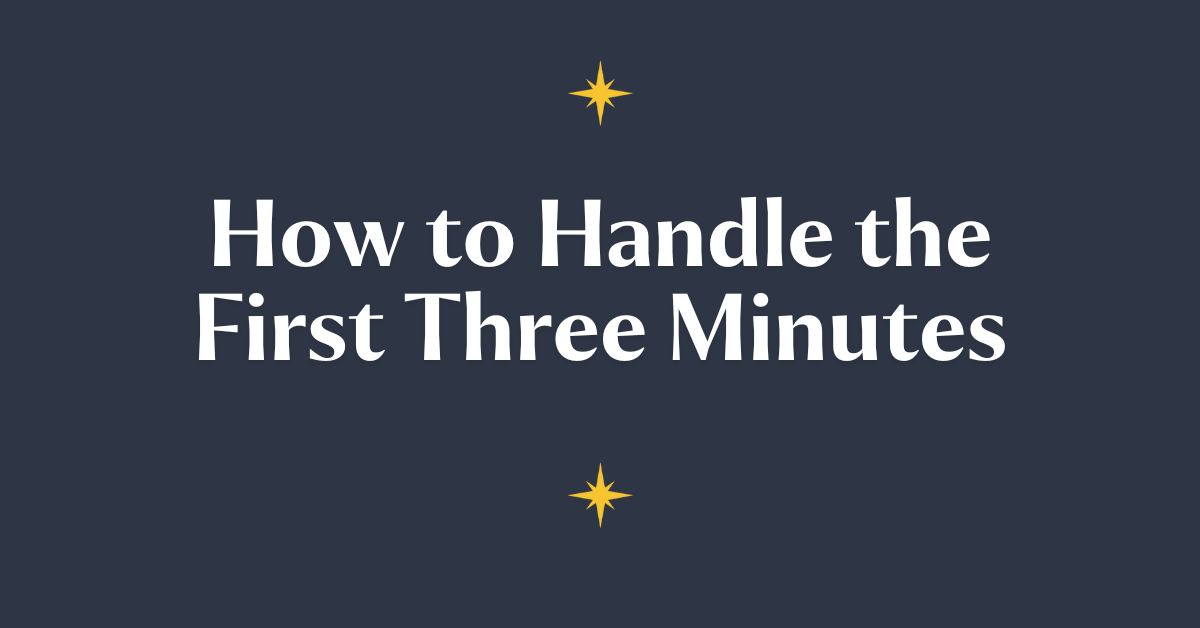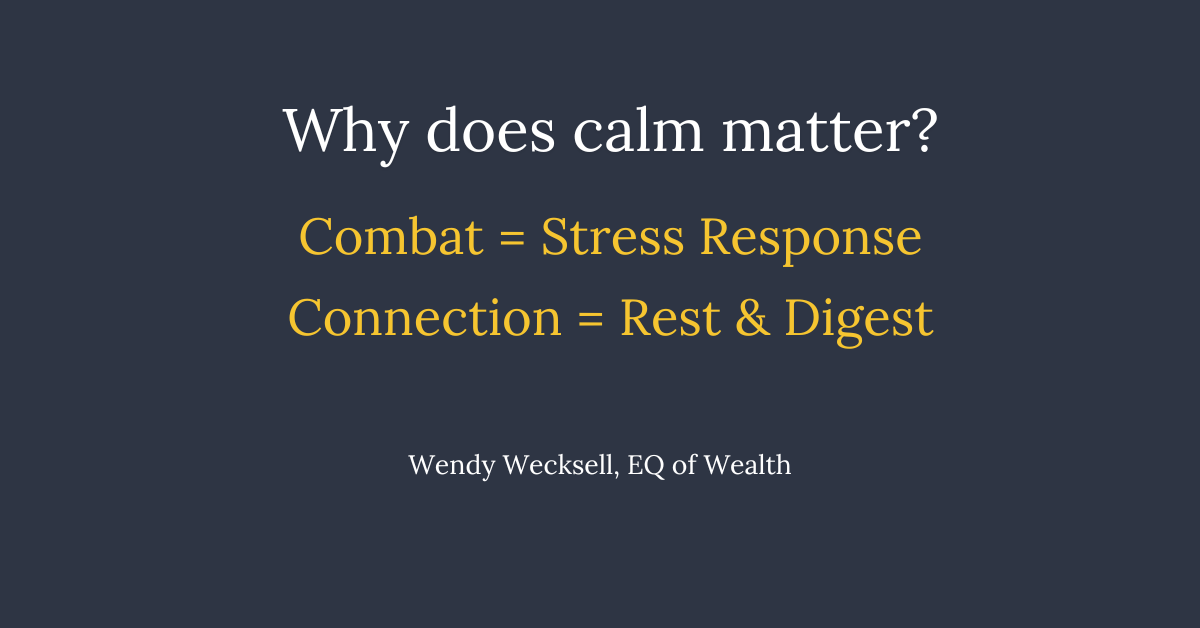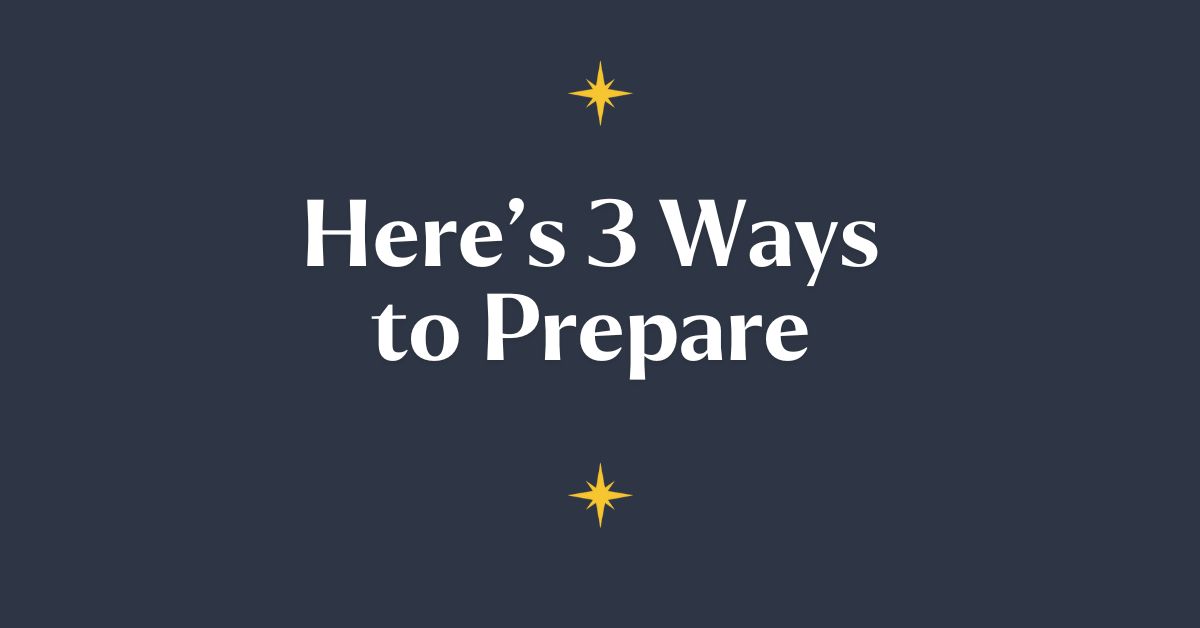Three Minutes
How three minutes can turn conflict into connection
The first three minutes of a conflict conversation can be a key predictor of divorce. Conversations that matter devolve into confrontation, not always because we’re angry, but because we deeply care.
So let’s start these conflict conversations right — according to the research, if we do those first 3 minutes well, we’re opening up a door to a new world for you and your relationships.
Your Goal: Prioritize calm. Be the calmest person in the room.
(This is an in-the-body somatic practice. It’s why “the physical” is a core part of the EQ of Wealth. Exuding calm is SO key.)
One of the key markers of stress response is a fast heart rate. Humans synch their heartbeats to each other (did you know that?).
A study about fire walkers showed this, and it was covered more in-depth in the book Ritual, which is on the EQ of Wealth reading list.
Hearts in synch
If someone is stressed/in stress response, you will feel it. And if you are in stress response — they will feel it. The end result? Feeling and STRESS. Heart rates will increasing. If you’re not in stress response, you can literally lower everyone’s heart rate.
How to lead in calming the room?
Prepare well.
1- Prepare before the conflict conversation.
I find that if I think through what I’m going to say, the success of the conversation is far more likely. Preparation gives you the grounding to actually have the conversation with maturity.
Write down gratitude for the other person to remind you why you value or appreciate them
Write down their point of view (this increases empathy)
Write down what you want from this conversation — what is the desired behavior or outcome?
Power Tip: Use positive rather than negative statements. For example, “I would like us to consider adding an independent board member” is better than “I don’t want everyone on our board to be a relative.”
If you’re feeling angry, write in full stream of consciousness, delving into why you’re mad at that person — and then burn/dispose of it
You can also release anger by shaking, dancing, exercising, screaming, or doing anything that releases that energy in a productive way. According to another EQ of Wealth reading list favorite, “Why Zebras Don’t Get Ulcers,” stress sticks in the body unless you release it. So release it. :)
Side Note: As a trained actor in college, I was never able to experience any freedom on stage without diligent preparation. An actor prepares, but you can too! Sometimes I come to conversations with print-out or written-out notes, so if I get nervous and forget my train of thought, I have a guidepost to follow.
2- Prepare for the meeting.
People must know what they’re walking into! You can’t throw a high-stakes conversation at someone out of the blue — this will trigger a stress response, and remember, the goal is to keep everyone calm.
Offer some context, but keep it light enough for this person to actually show up. A couple of suggestions:
“Are you free on Friday to talk about yesterday’s meeting? I want to share some updates with you, which are best shared over the phone.”
I find having some “new” information tends to help when approaching an old topic again with a fresh start.
“Do you have 45 minutes tomorrow to discuss this [INSERT investment/donation here]? I know we’ve spoken about this before, but I want us to approach this a little differently.”
“I’ve been thinking, and I want us to work well on [INSERT THING]. Do you have time this week? I want to understand your perspective better.
3- Game time: How to start the conversation!
You’ve come this far. I promise, if you follow the suggestions below, how quickly the conversation becomes connective will surprise you (in a good way).
Lead with gratitude! Nobody needs to show up for these types of conversations—thank the other person for giving you their time. Gratitude is very relaxing for the nervous system, so once again, this will calm you and the other person down.
Share how much the relationships mean to you. The goal is softening! A couple of examples:
“Dad, I don’t say this enough, but you know I love you.”
“Our working relationship and this job mean a lot to me, and I admire INSERT how you do INSERT thing.”
“I value your leadership and vision, and I want you to know that.”
Transition into curiosity — listen to them to before responding:
“I know we’ve approached this many times, but I want to understand your perspective on this INSERT SITUATION. Can you please let me know why this matters to you?”
“Before I go into my thoughts, I want to hear from you. What is your biggest concern around INSERT THING?”
These three steps will probably take 15 minutes to one hour (if not longer) and they will get you through the first three minutes of the conversation.
I can’t wait for you to discover what happens after those 3 minutes is go right. If you can get this far, your relationship and your impact will go the distance.






